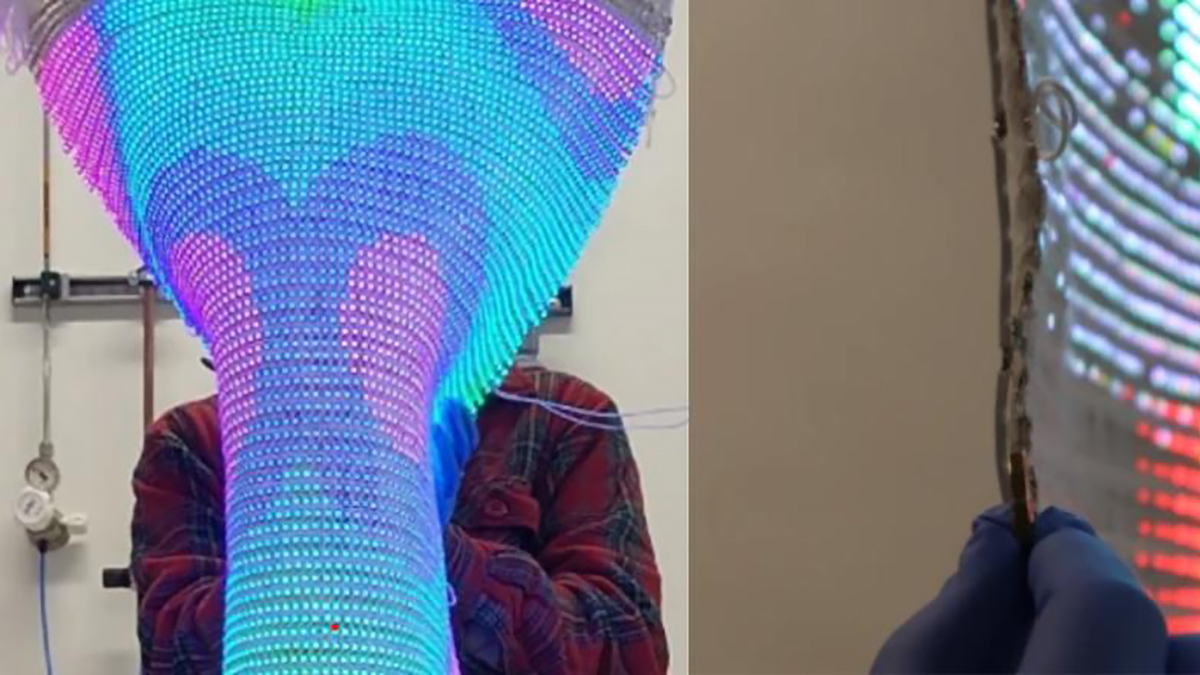A team of international scientists led by Cambridge University has created an entirely woven smart textile display. The textile integrates active electronic, sensing, energy, and photonic functions embedded into the yarns and fibers.
The research team feels the fully woven smart textile may lead to science fiction reminiscent applications like curtains that are also functional televisions and energy-harvesting carpets. Additionally, this smart textile has potential applications in wearables similar to the breath monitoring smart t-shirt developed by Canadian researchers. The smart fabric apparently marks the first successful integration of scalable large-area complex systems into textiles via fiber manufacturing. The research teams’ results are available in a Nature Communications publication.
“By integrating fiber-based electronics, photonic, sensing and energy functionalities, we can achieve a whole new class of smart devices and systems,” said Dr. Luigi Occhipinti of Cambridge’s Department of Engineering, “By unleashing the full potential of textile manufacturing, we could soon see smart and energy-autonomous Internet of Things devices that are seamlessly integrated into everyday objects and many other sector applications.”
Smart Textiles and the Weaving Process
However, current manufacturing processes limit smart textile’s functionality and dimensions. The integration of smart fibers into materials via standard knitting and weaving processes would allow the use of smart textiles in everyday objects, offering a range of opportunities. However, previously smart textiles were not compatible with conventional weaving.
By coating fibers in stretchable materials, researchers were able to run the smart fabric through conventional textile manufacturing equipment. Likewise, the research team was able to improve durability by braiding some of the fiber-based components. Lastly, the team connected multiple fiber components via conductive adhesives and laser welding. The result is a fabric that operates as a display, stores energy and monitors inputs. Additionally, the material detects radio frequencies, light, touch, and temperature.
“Our approach is built on the convergence of micro and nanotechnology, advanced displays, sensors, energy and technical textile manufacturing,” said team co-leader, Professor Jong min Kim, from Cambridge’s Department of Engineering. “This is a step towards the full exploitation of sustainable, convenient e-fibers and e-textiles in daily applications. And it’s only the beginning.”
Jack Brassell is a freelance journalist and aspiring novelist. Jack is a self-proclaimed nerd with a lifelong passion for storytelling. As an author, Jack writes mostly horror and young adult fantasy. Also an avid gamer, she works as the lead news editor at Hardcore Droid. When she isn't writing or playing games, she can often be found binge-watching Parks & Rec or The Office, proudly considering herself to be a cross between Leslie Knope and Pam Beasley.






































